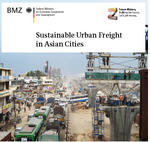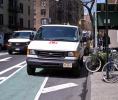China 2030: Building a Modern, Harmonious, and Creative High-Income Society
China 2030: Building a Modern, Harmonious, and Creative High-Income Society
World Bank, Beijing February 27, 2012 – China should complete its transition to a market economy — through enterprise, land, labor, and financial sector reforms — strengthen its private sector, open its markets to greater competition and innovation, and ensure equality of opportunity to help achieve its goal of a new structure for economic growth.
These are some of the key findings of a joint research report by a team from the World Bank and the Development Research Center of China’s State Council, which lays out the case for a new development strategy for China to rebalance the role of government and market, private sector and society, to reach the goal of a high income country by 2030.
Plans for more car-free weekends around Singapore
SINGAPORE: Authorities are planning for more car-free weekends around Singapore and this will involve pilot projects to close off roads on a more regular basis in areas like Haji Lane in Kampong Glam and at Club Street / Ann Siang Road in Chinatown. National Development Minister Khaw Boon Wan revealed this in his latest blogpost on Saturday. He said one indicator of liveability in a city is the extent in which its dwellers embrace car-free zones.
* Full text – http://www.channelnewsasia.com/stories/singaporelocalnews/view/1257452/1/.html
Report: Sustainable Urban Freight in Asia
 There is a new joint publication with CAI-Asia on Sustainable Urban Freight in Asia online on www.sutp.org
There is a new joint publication with CAI-Asia on Sustainable Urban Freight in Asia online on www.sutp.org
Freight transport has severe negative impacts on the local air quality in many Asian cities, and contributes significantly to greenhouse gas emissions. To avoid such undesired effects and at the same time to foster economic development by assuring an efficient supply of urban agglomerations with the wide reange of required goods, local and national governments in Asia need to take action now. The joint GIZ – CAI Asia publication Sustainable Urban Freight in Asia provides an overview on the current situation with regard to urban freight in Asia and outlines possible measures to be taken. It is based in part on SUTP’s Module 1g Urban Freight in Developing Cities.
* The new document is available for download here.
七 Seven wishes from World Streets for China in the Year of the Snake
Gong Xi Fa Cai Transport in Cities: May the Year of the Snake be the year in which China no longer follows the old tired paths of the twentieth century, but shows the world by example of affordable and efficient ways to move into a new era of harmony and transportation with a human face.
Here are our seven wishes for efficiency, harmony and mobility in Chinese cities in this Year of the Snake. 
China Transportation Briefing: Five trends to watch in 2013
Embarq’s China Transportation Briefing shares news and noteworthy research related to China’s transportation and urban development. Their goal is to help people who are interested in solving China’s urbanization and transportation problems understand relevant Chinese policies and trends. Each issue revolves around a particular theme, with content summarized from recent newsletters and magazines. This one looks at look at five trends affecting urban transportation in 2013. For more contact Heshuang Zeng at hzeng@wri.org.
Op-Ed: Think again about China and Innovation
This is excellent piece of analytic work by a young Canadian scholar, strips away many of the all too easy myths about China and Chinese copycat culture, and puts before us quite a different picture of their competitive potential for a very different future. . Let me quote the author’s opening paragraph which does a good job of setting the stage for what follows.
Conversations about innovation in the United States are rife with the adversarial language of exceptionalism. Rather than view China’s economic rise as a threat, American businesses and policy makers should take an open-minded look at the Chinese national innovation system. Innovation, according to the Chinese, should be in service of overcoming social and environmental challenges, not only generating prosperity and new inventions. And rather than viewing innovation as an individual pursuit, the Chinese recognize the necessity of a strong government role. Continue reading
Op-Ed: Mapping Cycling in China’s Cities
 Rory McMullan, a Mandarin speaking Sustainable Transport campaigner, has spend enough time in enough places in China, more often than not on the seat of his faithful Brompton (which tells you quite a lot about Rory), to have some developed thinking about where city cycling is today, and where it can reasonably hope to be just tomorrow, in particular in “smaller”(??) and medium sized cities, in that great, ever-surprising and sprawling country.
Rory McMullan, a Mandarin speaking Sustainable Transport campaigner, has spend enough time in enough places in China, more often than not on the seat of his faithful Brompton (which tells you quite a lot about Rory), to have some developed thinking about where city cycling is today, and where it can reasonably hope to be just tomorrow, in particular in “smaller”(??) and medium sized cities, in that great, ever-surprising and sprawling country. 
Third International Share/Transport Forum – Jiaozuo China
 This International Forum, the third in the series which got first underway in 2010 in Kaohsiung and met again in Changzhe in 2011, is once again, this year on 21/22 September in Jiaozuo China, bringing together leading thinkers and sharing transport practitioners from the People’s Republic of China, Asia and the world, to examine the concept of shared transport (as opposed to individual vehicle ownership or established forms of public transport) from a multi-disciplinary perspective, with a strong international and Chinese-speaking contingent.
This International Forum, the third in the series which got first underway in 2010 in Kaohsiung and met again in Changzhe in 2011, is once again, this year on 21/22 September in Jiaozuo China, bringing together leading thinkers and sharing transport practitioners from the People’s Republic of China, Asia and the world, to examine the concept of shared transport (as opposed to individual vehicle ownership or established forms of public transport) from a multi-disciplinary perspective, with a strong international and Chinese-speaking contingent.
Continue reading



